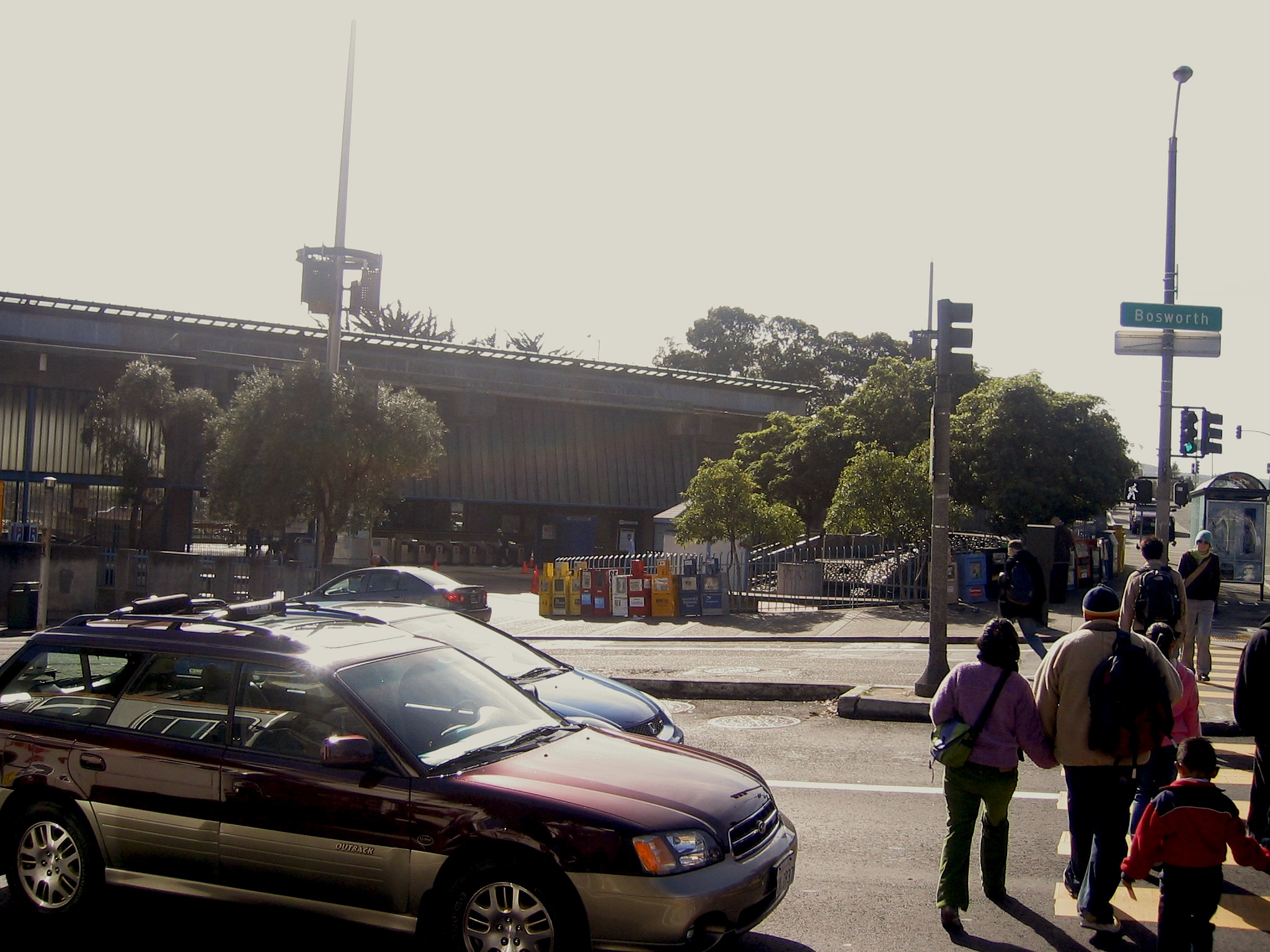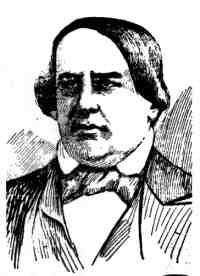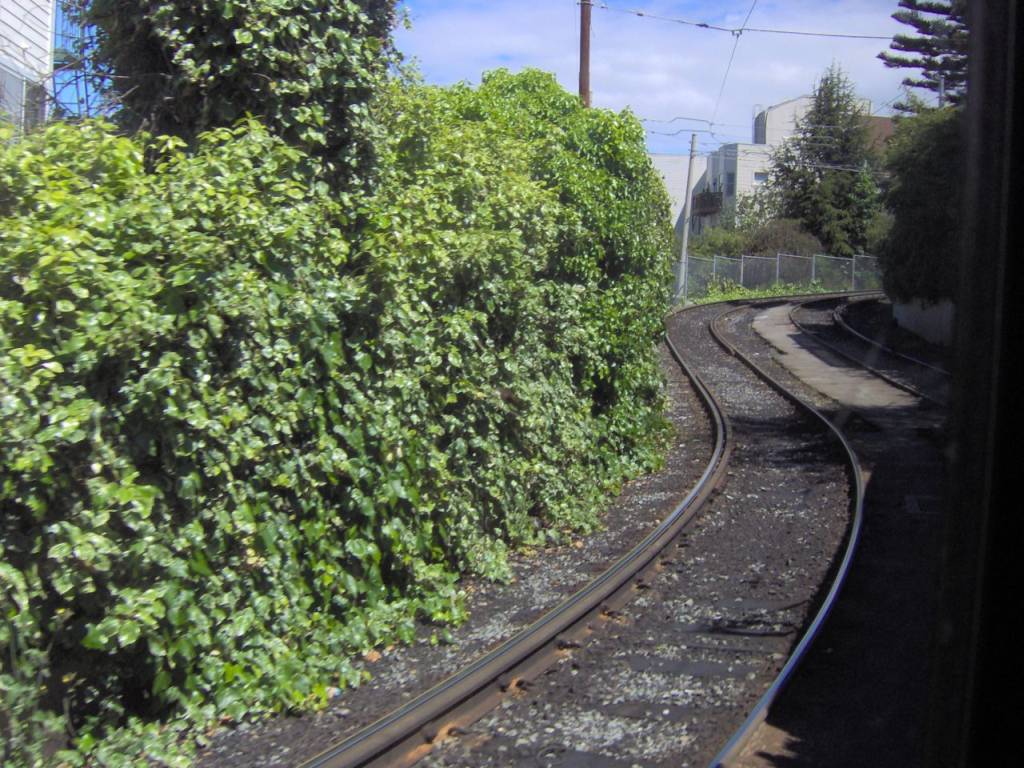|
Glen Park, San Francisco
Glen Park is a residential neighborhood in San Francisco, California, located south of Twin Peaks and adjacent to Glen Canyon Park. Geography The neighborhood is nestled at the southeastern edge of San Francisco's central hills, the San Miguel Range. It includes Gold Mine Hill, a portion of Fairmount Hill to the east, Martha Hill to the south, as well as their southern- and eastern-facing slopes. The neighborhood's streets follow the hill's contours to a small commercial district ("the Village") at the intersection of Chenery and Diamond streets. As defined by the San Francisco Planning Department, the neighborhood borders Diamond Heights to the northwest, along Diamond Heights Boulevard; Noe Valley to the north, along 30th Street; Bernal Heights to the east, along San Jose Avenue; and Outer Mission to the south, along Bosworth Street. (The San Francisco Association of Realtors draws a wider southwestern boundary and calls the adjacent neighborhood Sunnyside.) Historically, the ... [...More Info...] [...Related Items...] OR: [Wikipedia] [Google] [Baidu] |
Neighborhoods In San Francisco
San Francisco, in the US state of California, has both major, well-known neighborhoods and districts as well as smaller, specific subsections and developments. While there is considerable fluidity among the sources, one guidebook identifies five major districts, corresponding to the four quadrants plus a south central district. These five broad districts, counterclockwise are: Central/downtown, Richmond, Sunset, Upper Market and beyond (south central) and Bernal Heights/Bayview and beyond (southeast). Within each of these five districts are located major neighborhoods, and again there is considerable fluidity seen in the sources. The San Francisco Planning Department officially identifies 36 neighborhoods. Within these 36 official neighborhoods are a large number of minor districts, some of which are historical, and some of which are overlapping. Some of San Francisco's neighborhoods are also officially designated as " cultural districts." Alamo Square Alamo Square is a subset o ... [...More Info...] [...Related Items...] OR: [Wikipedia] [Google] [Baidu] |
Noe Valley, San Francisco
Noe Valley ( ; originally spelt Noé) is a neighborhood in the central part of San Francisco, California. It is named for Don José de Jesús Noé, noted 19th-century Californio statesman and ranchero, who owned much of the area and served as mayor. Location Roughly speaking, Noe Valley is bounded by 21st Street to the north, 30th Street to the south, San Jose Ave and Guerrero Street to the east, and Grand View Avenue and Diamond Heights Blvd to the west. The Castro ( Eureka Valley) is north of Noe Valley; the Mission District is east. History The neighborhood is named after José de Jesús Noé, the last Mexican ''alcalde'' (mayor) of Yerba Buena (present day San Francisco), who owned what is now Noe Valley as part of his ''Rancho San Miguel''. Noé sold the land, later to be known as Noe Valley, to John Meirs Horner, a Mormon immigrant, in 1854. At this time the land was called Horner's Addition. The original Noé adobe house was located in the vicinity of the present day ... [...More Info...] [...Related Items...] OR: [Wikipedia] [Google] [Baidu] |
Muni Metro
Muni Metro is a light rail system serving San Francisco, California, United States. Operated by the San Francisco Municipal Railway (Muni), a part of the San Francisco Municipal Transportation Agency (SFMTA), Muni Metro served an average of 157,700 passengers per weekday in the fourth quarter of 2019, making it the second-busiest light rail system in the United States. Six services – J Church, K Ingleside, L Taraval, M Ocean View, N Judah, and T Third Street run on separate surface alignments and merge into a single downtown tunnel. The supplementary S Shuttle service operates within the tunnel. Muni Metro operates a fleet of 151 Breda high-floor light rail vehicles (LRVs), which are currently being replaced by a fleet of 249 Siemens S200 LRVs. The system has 113 stations, of which 59 (52%) are accessible. Muni Metro is one of the surviving first-generation streetcar systems in North America. The San Francisco Municipal Railway was created in 1909 and opened its first st ... [...More Info...] [...Related Items...] OR: [Wikipedia] [Google] [Baidu] |
J Church
The J Church is a hybrid light rail/streetcar line of the Muni Metro system in San Francisco, California. The line runs between Embarcadero station and Balboa Park station through Noe Valley. Opened on August 11, 1917, it is the oldest and has the lowest ridership of all of the Muni Metro lines. Route description The inbound terminal is at Embarcadero station. The line runs west through the Market Street subway to a portal on Duboce Avenue, before turning onto Church Street. The line continues south on Church Street to 18th Street. Between 18th and 20th Street, the line cuts through Dolores Park in a private right-of-way featuring a 9% grade, the steepest section of the Muni Metro system. After crossing 20th Street, it cuts across the blocks east of Church, around a steep hill and returns to Church Street at 22nd Street in Noe Valley. The J then follows Church to 30th Street, then to San Jose Avenue and Geneva. Between Randall and Cotter Streets, there is a right-of-way in ... [...More Info...] [...Related Items...] OR: [Wikipedia] [Google] [Baidu] |
Glen Park Station
Glen Park station is an underground Bay Area Rapid Transit (BART) station located in the Glen Park neighborhood of San Francisco, California adjacent to San Jose Avenue and Interstate 280. The station has a single island platform. San Jose/Glen Park station on the Muni Metro J Church line is located nearby in the median of San Jose Avenue. Design The station was designed by Corlett & Spackman and Ernest Born in the brutalist style. Born also designed the station graphics. Service began on November 5, 1973. The November 1974 ''Architectural Record'' wrote of the station: Born designed a marble mural at the west end of the mezzanine. "100 pieces, few of which are cut at right angles, in warm brown and red-brown tones, make it up". The mural is prominently featured in a scene of the 2006 Will Smith film ''The Pursuit of Happyness''. The station was nominated in 2019 to be listed on the National Register of Historic Places. The Glen Park Association submitted the applica ... [...More Info...] [...Related Items...] OR: [Wikipedia] [Google] [Baidu] |
San Francisco Public Library
The San Francisco Public Library is the public library system of the city and county of San Francisco. The Main Library is located at Civic Center, at 100 Larkin Street. The library system has won several awards, such as ''Library Journal'''s Library of the Year award in 2018. The library is well-funded due to the city's dedicated Library Preservation Fund that was established by a 1994 ballot measure, which was subsequently renewed until 2022 by a ballot measure in 2007. History In August 1877 a residents' meeting was called by state senator George H. Rogers and Andrew Smith Hallidie who advocated the creation of a free public library for San Francisco. A board of trustees for the Library was created in 1878 through the Free Library Act, signed by Governor of California William Irwin on March 18, which also created a property tax to fund the Library project. The San Francisco Public Library (then known as the San Francisco Free Library) opened on June 7, 1879 at Pacific Hall ... [...More Info...] [...Related Items...] OR: [Wikipedia] [Google] [Baidu] |
San Francisco Municipal Railway
The San Francisco Municipal Railway (SF Muni or Muni), is the public transit system for the City and County of San Francisco. It operates a system of bus routes (including trolleybuses), the Muni Metro light rail system, three historic cable car lines, and two historic streetcar lines. Previously an independent agency, the San Francisco Municipal Railway merged with two other agencies in 1999 to become the San Francisco Municipal Transportation Agency (SFMTA). In 2018, Muni served with an operating budget of about $1.2 billion. Muni is the seventh-highest-ridership transit system in the United States, with rides in , and the second-highest in California after the Los Angeles County Metropolitan Transportation Authority. Operations Most bus lines are scheduled to operate every five to fifteen minutes during peak hours, every five to twenty minutes middays, about every ten to twenty minutes from 9 pm to midnight, and roughly every half-hour for the late night "owl" ro ... [...More Info...] [...Related Items...] OR: [Wikipedia] [Google] [Baidu] |
1906 San Francisco Earthquake
At 05:12 Pacific Standard Time on Wednesday, April 18, 1906, the coast of Northern California was struck by a major earthquake with an estimated moment magnitude of 7.9 and a maximum Mercalli intensity of XI (''Extreme''). High-intensity shaking was felt from Eureka on the North Coast to the Salinas Valley, an agricultural region to the south of the San Francisco Bay Area. Devastating fires soon broke out in San Francisco and lasted for several days. More than 3,000 people died, and over 80% of the city was destroyed. The events are remembered as one of the worst and deadliest earthquakes in the history of the United States. The death toll remains the greatest loss of life from a natural disaster in California's history and high on the lists of American disasters. Tectonic setting The San Andreas Fault is a continental transform fault that forms part of the tectonic boundary between the Pacific Plate and the North American Plate. The strike-slip fault is characterized by ma ... [...More Info...] [...Related Items...] OR: [Wikipedia] [Google] [Baidu] |
San Francisco And San Mateo Electric Railway
The San Francisco and San Mateo Electric Railway (SF&SM) was the first electric streetcar company in San Francisco, California. The company was only in business for ten years, starting from 1892 until it was merged into the United Railroads of San Francisco (URR) in 1902. Initial founding Brothers Isaac (Behrend) and Fabian Joost were real-estate developers in the neighborhood of Sunnyside. They saw the success of Frank Julian Sprague's Richmond Union Passenger Railway in Richmond, Virginia, and determined that an electric streetcar system running through their then-isolated portion of the city would be a good way to boost property values. In 1890, the San Francisco & San Mateo Railway Co. was incorporated. On July 29, 1891, the railroad held a silver spike ceremony at Ocean View at the border between the two counties; Behrend Joost, president of the railroad, physically drove the final spike symbolically joining the rail segments. At the time, poles for the overhead lines ... [...More Info...] [...Related Items...] OR: [Wikipedia] [Google] [Baidu] |
Daylighting (streams)
Daylighting can be defined as "opening up buried watercourses and restoring them to more natural conditions". An alternative definition refers to "the practice of removing streams from buried conditions and exposing them to the Earth's surface in order to directly or indirectly enhance the ecological, economic and/or socio-cultural well-being of a region and its inhabitants”. The term is used to refer to the restoration of an originally open-air watercourse, which had at some point been diverted below ground, back into an above-ground channel. Typically, the rationale behind returning the riparian environment of a stream, wash, or river to a more natural state is to reduce runoff, create habitat for species in need of it, or improve an area's aesthetics. In the UK, the practice is also known as deculverting. In addition to its use in urban design and planning the term also refers to the public process of advancing such projects. According to the Planning and Development Dep ... [...More Info...] [...Related Items...] OR: [Wikipedia] [Google] [Baidu] |
San Francisco Planning And Urban Research Association
SPUR is a nonprofit public policy organization focused on regional planning, housing, transportation, sustainability and resilience, economic justice, good government, and food and agriculture in the San Francisco Bay Area. Its full name is the San Francisco Bay Area Planning and Urban Research Association. History SPUR's history dates back to 1910, when a group of city leaders came together to improve the quality of housing after the 1906 San Francisco earthquake and fire. That group, the San Francisco Housing Association, authored a report which led to the State Tenement House Act of 1911. In the 1930s, the SFHA continued to advocate for housing concerns. In the 1940s, the SFHA merged with Telesis, a group of professors and urban planners from UC Berkeley's city planning program led by William Wurster, to become the San Francisco Planning and Housing Association. In 1942, the association landed a major success with the creation of San Francisco's Department of City Planning. ... [...More Info...] [...Related Items...] OR: [Wikipedia] [Google] [Baidu] |
San Francisco Bay
San Francisco Bay is a large tidal estuary in the U.S. state of California, and gives its name to the San Francisco Bay Area. It is dominated by the big cities of San Francisco, San Jose, and Oakland. San Francisco Bay drains water from approximately 40 percent of California. Water from the Sacramento and San Joaquin rivers, and from the Sierra Nevada mountains, flow into Suisun Bay, which then travels through the Carquinez Strait to meet with the Napa River at the entrance to San Pablo Bay, which connects at its south end to San Francisco Bay. It then connects to the Pacific Ocean via the Golden Gate strait. However, this entire group of interconnected bays is often called the ''San Francisco Bay''. The bay was designated a Ramsar Wetland of International Importance on February 2, 2017. Size The bay covers somewhere between , depending on which sub-bays (such as San Pablo Bay), estuaries, wetlands, and so on are included in the measurement. The main part of the bay meas ... [...More Info...] [...Related Items...] OR: [Wikipedia] [Google] [Baidu] |











